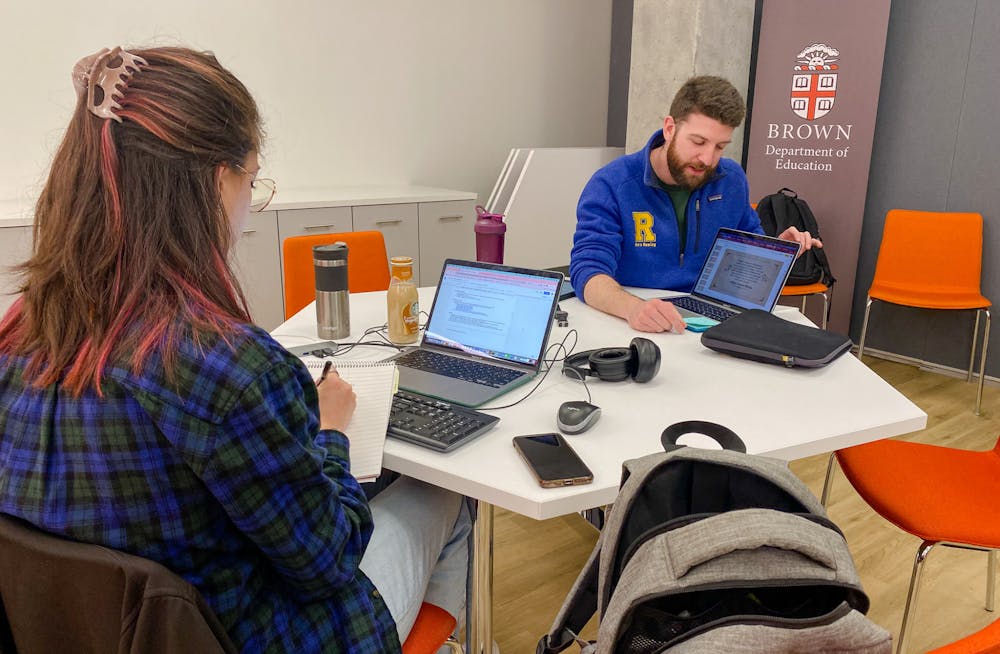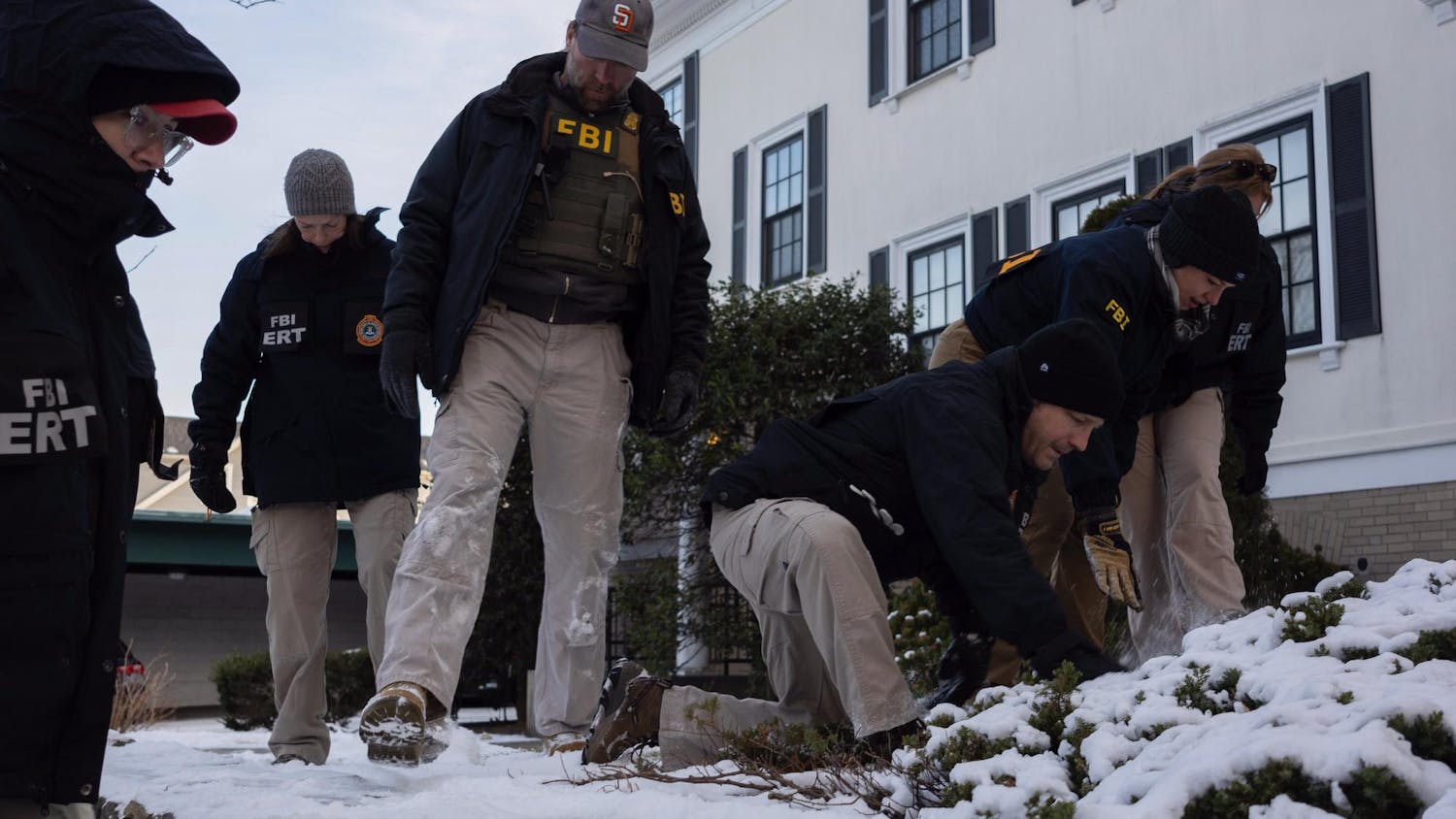As the threat of COVID-19 loomed over campus in March 2020 and University community members waited in anticipation for the inevitable email that would mandate their departure from campus, students, faculty and administrators were faced with a preeminent question: What could academics and remote learning look like in the context of a pandemic?
Courses — along with most other facets of everyday academic life — moved online, students were called back home from their study abroad programs and other learning opportunities dissipated as the world confronted an unprecedented health and economic crisis. Brunonians found themselves scattered across the globe.
But just as the pandemic forced the University to adopt institutional changes to help make remote learning a reality, it also fostered opportunities for instructional innovation and expanded academic accessibility. When class materials and recordings had to become easily available virtually, for instance, disability justice advocates saw a years-long demand finally met — to the benefit, they said, of all students, disabled or not.
Two years later, many of the changes spurred initially by COVID-19 are here to stay. They are also now supplemented by new opportunities for experiential learning, or “collaborative, project-based and research experiences” — an area of Brown academics that has gained institutional priority coming out of the pandemic.
“What I love about Brown students is that they are intellectually curious, and they want to translate what they know into the world to try to make (it) a better place,” said Provost Richard Locke P’18. Throughout the pandemic, the University has been searching for ways “to create more of (experience-based) opportunities for people (to) learn by doing — not just by sitting passively in a classroom and being taught.”
The pandemic has redefined Brown’s academic landscape, with accessibility concerns and academic innovation now at the forefront of the University’s mission.
“It’s incumbent on us, after all we’ve given up and lost,” said Betsy Shimberg, senior associate dean of the College for co-curricular and experiential learning, “to think about how these innovations might help benefit us going forward.”
‘There were so many classes I was mentally checked out of’: tackling the initial rigidity of online learning
When the pandemic forced community members to vacate campus, many students faced both structural and personal barriers to picking up their lives and moving away from College Hill — challenges that were compounded for marginalized and disabled students, as well as students who were low-income, dealing with mental illness or lacking a safe home outside of Brown, according to Evan Dong ’22.
In addition to institutional concerns related to online learning, future academic calendars and more, the University had to ask “what is expected of and reasonable to ask from these students,” Dong said.
Because of the pandemic, Dong said conversations about disabilities, accommodations and accessibility in academic spaces became “much more salient.”
For many students with disabilities, trying to function in an isolated remote learning environment was “detrimental to their mental health,” said Anna Ohrt ’23, who is currently transitioning into a leadership position within Disability Justice at Brown.
Director of Student Accessibility Services Karen Andrews found that in universities across the nation, students were struggling with the initial rigidity of online learning, including the physical demands of staying on camera all day and distractions that come with Zooming in from multi-generational households.
No matter where students were learning from, “everybody was at home,” added Assistant Director of SAS Desirae Mix. There were “lots of distractions in terms of being on WiFi at the same time, or trying to find a quiet space to pay attention to your lecture.”
For Aleena del Rosario ’23.5, e-board member of Project Let’s Erase The Stigma, participation was the biggest struggle when it came to remote learning. “I was not participating, I was not engaged,” she said. Due to mental health reasons, del Rosario found that she couldn’t stay awake for online classes that were two and a half hours long. “There were so many classes that I was mentally checked out of,” she added.
The challenges of learning in unaccommodating academic spaces, laid bare by the pandemic, impacted all students.
When students that were normally accommodated in a physical classroom setting suddenly found themselves in an unfamiliar learning environment, Dong said, conversations about accessibility were “brought to the mainstream.”
Administrators, faculty and students began to reconsider how Brown’s academic environments could be transformed to be made “inclusive for everybody,” Andrews said. By “seeing disability as part of diversity and rolling that into diversity discussions, … we were able to overcome some of the hurdles of working on campus.”
Student groups including Project LETS and Disability Justice at Brown began pushing for accessibility initiatives that would address rising concerns over students’ transformed academic experiences. These organizations advocated for implementing a universal pass grading system — in which all students would have received a grade of “Pass” or “Pass with Distinction" in their fall 2020 courses — captioning Zoom meetings, making recorded lectures available and greater flexibility from faculty, according to Ohrt.
“Having remote options is something that disability justice advocates have been fighting for for years,” she added. “A lot of people with disabilities really benefit from being able to do work from home, not having to physically go to lectures and having recordings available. … There were huge strides in accessibility.”
The University readily met many of these student demands, specifically in the realm of technical infrastructure. For the past two academic years, students have largely been able to attend courses virtually, recorded lectures have been made available and lecture transcripts and slides were often posted online, Dong said. When students were first sent home in 2020, the University also allowed students to change their grading options to SN/C after the initial deadline had already passed.
Moreover, in recognizing financial and mobility barriers students faced, the University provided financial assistance to some students leaving campus and E-Gap Funds to cover technology and internet service needs, among other funds.
Being ‘intentional’ about teaching: faculty reflect on instruction methods
While some of these changes were institutional, faculty members played a major role in normalizing the increasing accessibility accommodations needed in their individual classrooms. Speaking anecdotally, Dong found that many instructors became more relaxed with grading and attendance, being far more willing to trust students and not pry when personal issues got in the way of academics.
Faculty “had a lot more empathy for students because they were all” going through the pandemic together, Mix said. The pandemic jump-started conversations “about how accessible their curriculum was and (how accessible it) could be.”
Over the past two years, The Harriet W. Sheridan Center for Teaching and Learning has actively engaged in equipping faculty members with the necessary resources to deal with online learning and greater student needs, according to Mary Wright, executive director of the center. During the 2021-22 academic year, the center collaborated with over half of Brown’s non-medical faculty, a quarter of the undergraduate population and about a third of the graduate students to develop “very personalized ways of supporting” academics, Wright said.
In spring 2020, the center surveyed Brown instructors about what aspects of remote learning they most needed help with, Wright said. Based on the results of this survey, the center worked to help individual faculty members with moving course resources to a digital format, translating courses to a fully online and asynchronous format and developing new assessment methods.
“It was time for instructors to step back and be intentional about their teaching,” Wright said. It was time to reflect and ask: “Are there better ways to achieve the learning objectives that I have for my students?”
Through its Anchor Course Design Institute, the Sheridan Center also helped faculty members develop new techniques to build online communities as students took their courses from all over the world.
‘Access benefits everyone’: how the pandemic forced academic innovation
With these changes in place and a commitment to finding new opportunities for accessibility, students at Brown were offered ways to engage with their academics in an entirely new fashion.
“For a lot of students who prefer to access (courses) remotely and watch recordings, (the pandemic) opens up the whole world of academia to them,” Ohrt said. Before the pandemic, “it had been extremely challenging for (those) students to participate in the academic experience.”
Addressing barriers that weren’t previously considered on a broader scale, such as mobility challenges, expanded opportunities for all academic participants, disabled or not. Because of the pandemic, for instance, it became normal for guest speakers to come to lectures, students were able to work with professors who were traveling and virtual conference attendance became a norm. Students could engage in their fields of study more readily with greater access to resources across the country.
“Being able to reach a broader academic space … has been really cool,” Dong said. “Access benefits everyone.”
The constraints of the pandemic have further engendered a broader recognition that “disability provides opportunities for innovation,” Andrews said. New technologies were developed “out of necessity, … (but now) we can open it up so more and more students have opportunities.”
One of the ways the pandemic encouraged innovation beyond the typical academic setting is through its effects on the University’s experiential learning offerings: research, internship and in-the-field opportunities that take place alongside standard curricular academics.
When the pandemic hit, students who were participating in experiential learning programs were cut off from many of the communities with which they had been engaging.
“That meant that there were people in Providence who could not receive those services,” Shimberg said.
On-campus centers like the Swearer Center for Public Service and the CareerLAB came together to supplement these lost opportunities by establishing the Summer Projects for Research, Internships and Teaching Awards program, which turned to the community for projects students could engage in.
The SPRINT program also marked an important shift in terms of accessibility, according to Shimberg. Before the pandemic, similar internship and research programs would automatically favor students who had built necessary connections and had networks available to them, she said. But because any student can apply to a SPRINT opportunity directly, the applicant pool “has increased enormously and changed from a diversity point of view.”
The University invested heavily in the SPRINT program, according to Locke. One of the main priorities when developing the program was ensuring funding to make the available stipends adequate and competitive, which Locke said increased the participation of first-generation, low-income students in experiential learning opportunities.
In addition, in fall 2021, the Swearer Center’s existing Engaged Scholars Program — in which students worked directly with community partners while taking guided coursework — transitioned into an Engaged Scholars undergraduate certificate. This opened the program to students in every department across the University. According to Julie Plaut, director of engaged scholarship in the Swearer Center, this helped expand interdisciplinary discussions in the space of experiential learning.
‘Learning doesn’t need to just happen on campus’: how experiential learning has embraced existing accessibility needs
The pandemic proved to the University that there was student interest in experiential learning, according to Locke. “We saw students that were living off-campus choose to (participate in forms of) experiential learning” on their own, Locke said. As a result, administrators at the University asked themselves, “How do we create more opportunities for students? And how do we structure them so students don’t have to do that on their own?” he added.
Shimberg noted that while students are interested in experiential learning — because it allows them to build social networks before graduating, try out careers and work on complex, real-world issues — many are afraid of pursuing these opportunities because of the time they already lost on campus as a result of the pandemic.
Fortunately, the pandemic highlighted that “learning doesn’t need to just happen on campus,” Shimberg said.
In summer 2021, Locke brought together the Experiential Learning Committee, which ultimately led to the development of the BE3 Brown programs — Berlin: Research and Entrepreneurship; Boston: BioTech and Life Sciences; and United States: Campaigns and Social Change. These programs combine internship opportunities and coursework and allow students to gain direct field experience while continuing to complete their concentration requirements at Brown.
By connecting students to these mentorship opportunities while they remain enrolled at the University, “we can build out all of this access,” Shimberg said. “Students with demonstrated financial need can be provided with need-based financial aid for part of the cost of attendance.”
International students are also able to participate in the BE3 Brown programs because the internships “have been intentionally constructed in terms of time limits,” according to Shimberg. During a typical academic semester, U.S. immigration regulations limit off-campus working hours for students who are studying in the U.S. on an F-1 visa to 20 hours per week, which aligns with the minimum expected working hours for BE3 internships, she added.
These new experiential learning initiatives more directly target accessibility issues that low-income students have traditionally faced, according to Locke. He added that low-income students were previously unable to participate in study away opportunities because their need-based financial aid packages did not follow them.
To address this discrepancy in access, the University began giving students the necessary funds “even if they weren’t on campus,” Locke said. The pandemic “taught us that if we really want our programs to be fully accessible, then the financial aid packages have to travel with the students.”
Having access to experiential education, internships and research opportunities also allows more students to be attractive hires following their undergraduate education, Locke said. These initiatives in experiential learning help level the differences in experience that can exist between low-income, first-generation students and middle- or upper-class students, he added.
“It doesn’t matter whether you’re on campus (or) off-campus, whether you’re online or in-person, synchronous or asynchronous, in this country or not,” Locke said. Experiential learning “creates opportunities for everyone.”
Elevating Brown’s open education ‘to a new level’
For disability justice advocates at the University, the biggest fear in the midst of a global transition out of the pandemic is a return to normal that entails “an active choice to exclude disabled people,” Dong said.
“The main thing with disability justice is we want to provide as many ways for students to participate in academia as possible,” Ohrt said. “Continuing to provide these remote options allows students the opportunity to participate in academic experiences at Brown. Ideally, we want to make sure these opportunities remain available.”
“No one thinks we have to go back to where we were in 2019,” Locke said, “All of us are saying, ‘We learned a bunch of things … (now) how do we actually institutionalize’ this new knowledge?”
Wright and the Sheridan Center are actively thinking about institutional resilience and how University programming can remain adaptable as the global health situation continues to fluctuate. With the University returning to residential community learning, Wright is working with faculty to ensure that student pathways are accessible even if they’re studying remotely.
Wright likes to think that the University is shifting into “the new normal.”
The pandemic has given “us an opportunity to be aspirational, inspirational and transformational in what we do,” Andrews said. “Let’s take these lessons that we learned and turn them into something phenomenal.”
For Locke, the academic innovation spurred by the pandemic is central to Brown’s mission.
“These innovations, this combination of online, remote-accessible (academics) with experiential learning and financial support” are going to take Brown’s open education, Locke said, “to a new level.”

Alex Nadirashvili was the managing editor of multimedia and social media for The Brown Daily Herald's 133rd Editorial Board. As a former University News editor, he covered faculty, higher education and student life, though his proudest legacy is The Brown Daily Herald TikTok account.





